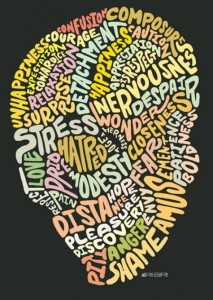The uncertainty and thrill of exploring mountains and minds: My travel insights from Sun Valley.
Video link: http://youtu.be/3OMRh31b0fk
I have just returned from beautiful Sun Valley, ID. A famous ski resort in the winter time, the place transforms itself as the sun starts heating up the mountains in the summer. Hiking, mountain biking, fishing, golf, and an amazing outdoor skating rink are just a few attractions that make it an ideal summer vacation spot for those who enjoy an active lifestyle and outdoors.
Last year when I was there, I went on a few hiking trails near the resort. This year, I decided to be more adventurous and explore the Bald Mountain. I chose a fairly easy trail: 5 miles of hiking up the mountain, stopping for lunch at a restaurant up there, and taking a gondola down. That was my plan.
A few hours into the hike, I somehow missed the turn to the connector that would take me to the restaurant and the gondola. Instead, I found myself on a different trail. For a while, everything seemed fine. The views were gorgeous. I was moving up the mountain on a narrow path. At one point I could see a town at the bottom of the mountain and some remnants of a forest fire. Then, all of a sudden, I saw mountain bikes coming down on the same path. It was a steep way up and an abrupt drop down, so there wasn’t really a place for me to step aside. I had to plaster myself against the mountain to let them pass me. It didn’t feel very safe. That was my first red flag. The path was curving around the mountain, and as I was marching up, I thought that maybe, after that next curve, I will finally see the gondola. But after walking around several curves, I still couldn’t see anything. A few more bikes passed me on the way down. I asked one of them about the gondola, to which he replied, “There is no gondola up there. If you keep going for 5 or 6 more miles, you will reach the summit.” At that point I realized I was on a wrong trail. So, I had to turn back and retract my steps.
On my way back, I saw the turn I missed. It was a little over a mile to the gondola. It was getting late, after 4pm, and my lunch plans were long forgotten. As I was moving along, I was wondering when the gondola would stop running. Will I have to hike all the way down after finally making it to the right spot? When I reached the gondola, I saw it was moving. I asked the man when they closed. He said, “Now.” It was 5 minutes after 5pm. I barely made it down.
It all ended well, and it was quite an adventure. I want to share with you today two insights inspired by my exploration, which are also applicable to business.
First, don’t show up as a stranger, be an explorer. Being an explorer requires some advance preparation. As speakers, teachers, and trainers, we often travel to different locations to deliver our messages. Your message may be the same wherever you go, but today, I encourage you to find your way to connect to the place and get to know it better. Think about how you can bring more local elements into your presentation to make it more relevant and exciting to your audience. Just like Sun Valley transforms itself from season to season, offering something new to its visitors, you can build a faster connection if you change your content to include local stories, illustrations, local businesses, or known personalities with local roots. The Internet makes it easy to learn about the place before you go there so take advantage of it. Read a few local newspapers. Talk to people from the area on social media. You can even include some visual hallmarks into your presentation. Show that you care about the place, its culture, and its people, and your audience will respond with more trust and enthusiasm.
Second, when you are in that “explorer” mindset, you have to be flexible and open to receive quick feedback and fine-tune your approach. Exploration offers both the inherent uncertainty and the thrill of something new and exciting. You have to balance the two. Just like I felt on that mountain, when you make a decision to take a certain path, it is so compelling to stay on it. But in a new context or uncertain situation, you have to watch for the signs. When you work with a different type of audience or in a new culture, don’t be afraid to test your new material and make adjustments as a result. When you take the risk of changing your content and offering something new – a new story or activity – you don’t always know how it will land with your audience. Don’t wait for everything to be perfect. The cost of failure grows exponentially, the longer you wait. You don’t want to hike 10 more miles only to discover that you have to spend the night on the mountain. You want to notice red flags, turn around and find a better way quickly. If you can balance the uncertainty of something new and the thrill of it, you can create a much more memorable experience for your audience.
Don’t be predictable and boring, be aware and exploring!
P.S. Getting lost in the mountain was not the only thrill I experienced in Sun Valley. I also attended a fantastic show called “Sun Valley on Ice” that featured 3-times U.S. Gold Medalist, World Bronze Medalist and twice-Olympian Johnny Weir. As a guest blogger, I shared my experience, photos and videos of the event here.





